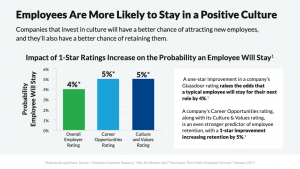
In a recent interview, one of the world’s most compelling management consultant, Tom Peters, responded to a question related to what is missing from today’s discussion about management. In classic as well as vintage Tom Peter fashion, he responded:
“My real bottom-line hypothesis is that nobody has a sweet clue what they’re doing.”
He went on to say we, in business, should be trying things out at an insanely rapid pace as a result. It is fair to say in the world of marketing, what has been taking place is trying things out at a rapid clip. One of those things has been taking a mountain of data and attempting to get predictive with it. The hopeful potential being buyers will leave a trail of data, which leads to non-miss insights on how to convert into a steady revenue stream.
Here is a brief clip of the always thought-provoking as well as entertaining Tom Peters with an emphasis on developing people and talent:
Analytics Overload
Recently, in working with a senior leader in marketing for a high-tech firm, we reviewed a two hundred-page slide deck on analytics pulled from their CRM, Marketing Automation, Sales Automation, Social Media, and Web Analytics Platforms. Basically, for the individual and myself, we ended up saying the same thing Tom Peters did after taking a recent 18 months hiatus to read recent business books:
“I am more confused than when I started.”
It was a case of classic analytics and data overload. My hunch is this scene is being repeated in conference rooms all over the United States and the world. We have had a precipitous rise in data over the past five years. Inundating executives with analytics overload. A case can be made, for some; they have proven to be very helpful in shaping future strategic direction in marketing. While, an equal case can be made such analytics overload has caused even more confusion and paralysis in what to do next.
Too Busy Forecasting Instead Of Strategy Making
The rise in data-driven analytics, especially in marketing, may be causing marketing executives to confuse forecasting with strategy making. Scoring mechanisms for website visits and leads have placed marketing executives in the role of attempting to forecast the next bundle of leads and sales. If CMO’s are not careful, they can find themselves becoming a forecasting magnet akin to playing blackjack in Las Vegas. As we all know having a seat at the blackjack table does not last long. Which could be the same case at the senior management table if forecasting is overemphasized.
What marketing executives should be concerned about is customer strategy making. Helping the organization to develop a more refined and intimate view of its customers. Constructing narratives about existing customers and future buyers, which guide the organization’s strategic direction towards fulfilling customer goals and needs.
Focus In On Strategic Marketing Narratives
In order to effectively plan as well as secure resources to deliver on a plan, marketing executives should focus on developing strategic marketing narratives. Recognizing, as mentioned above, strategy is distinct from forecasting. This perspective does not mean forecasting is unimportant. However, it does mean without strategic narratives, forecasting will lack context and be far from accurate as opposed to within reason.
How can marketing executives focus in on and deliver compelling strategic marketing narratives? Here a few suggestions to consider:
- Make marketing strategy buyer research-based, not entirely data-driven. Executives in marketing today should embrace ethnographic-based buyer research to gain true deep understanding of buyers. Strategic marketing narratives originate from contextual deep insights.
- Create persona-based strategic narratives. Buyer personas are helpful in providing a common view of customers and buyers. Bringing to life real world representations of real people based on qualitative buyer interviews. Persona-based strategic narratives allow marketing executives to have an important seat at the table communicating the world of customers and buyers to the senior operations team.
- Develop current and past scenario narratives. Gaining understanding of the existing as well as past contextual situations customers and buyers faced provides ample opportunity to reevaluate past and current strategies. Identifying where the organization missed the mark in helping buyers to accomplish their goals. It gives leaders in marketing a constructive way for examining past and current plans against customer understanding. For example, one company I helped altered strategic marketing plans to move away from OEM sales to strengthening OEM sales efforts as a result of new understanding of scenarios customers encountered.
- Create envisioning oriented strategic marketing narratives. Marketing leaders can be in a prime position for helping the organization to envision “what if” future interactions with customers. Creating strategic persona-based narratives on potential scenarios, which provide a different view of how the organization and customers can work together to solve problems as well as attain goals. One company doing this well today is GE. GE marketing plans ask both internal teams as well as customers to “reimagining” the future world of how things can work. Here is a quick example of a GE Reimagining Home Appliance Ad:
Evolving Narratives Leads To Better Planning
Marketing executives who adopt sound strategic marketing narratives, which focus on the past, present, and future, can help develop an organization’s ability to shape its future direction. Recently, helping one company in healthcare, persona-based strategic narratives were created, which drastically repositioned their past and current marketing approaches into a new forward-looking strategic approach. Previous efforts in analytics and a multitude of quantitative surveying shed little light on how the organization should move forward in the rapidly changing world of healthcare.
The lesson here is the promise of being able to predict and forecast the future on analytics alone falls far short of expectations. I suspect this maddening search for the silver bullet in analytics is being played out right now in many conference rooms. Frantic executives sifting through a mountain of analytical data in the hopes of coming up with a plan for the future.
While analytics will play a role in predictive marketing and forecasting, marketing leaders will best be served in shaping the evolving strategic marketing narratives, which helps the organization to envision the future. Reimagining a brighter future for them and their customers.
Business & Finance Articles on Business 2 Community
(353)







